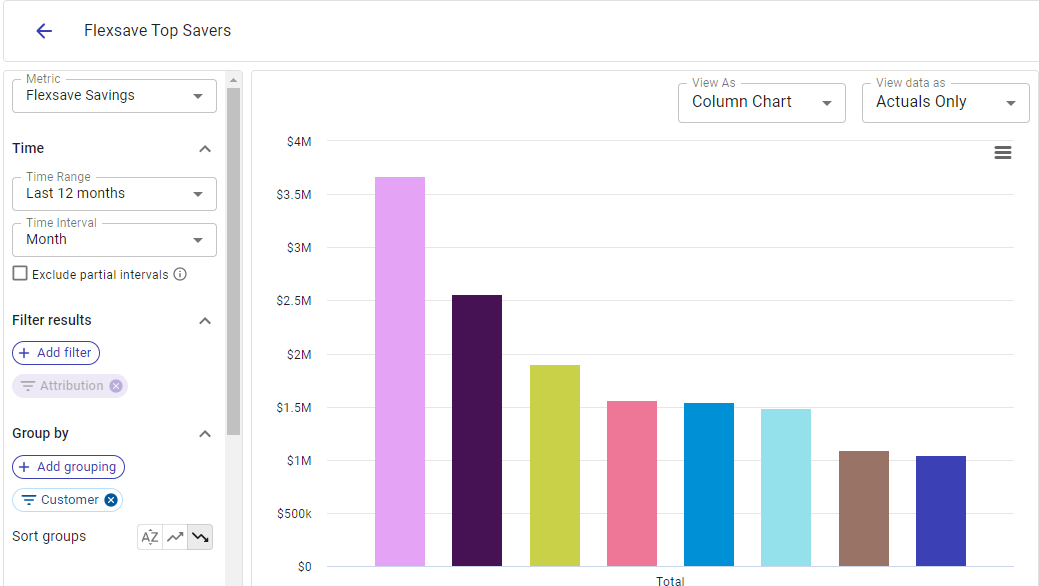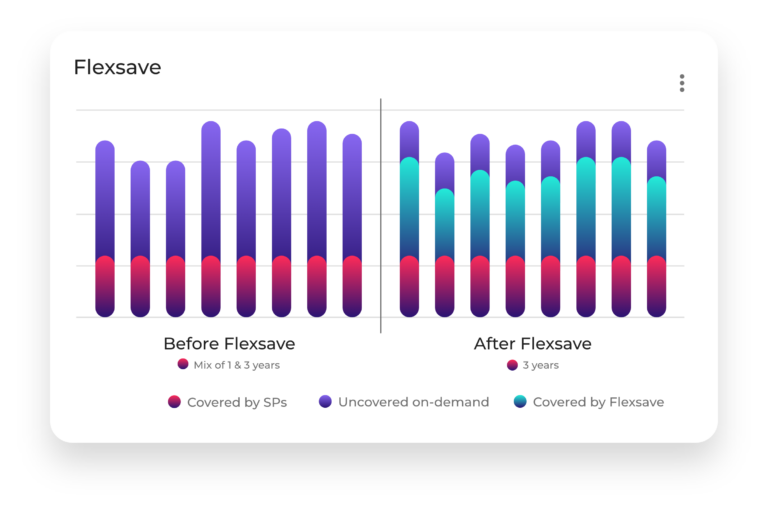Companies of all shapes and sizes have saved big by taking advantage of Flexsave’s automated discounts
Since DoiT Flexsave™ was launched in Q1 2022, it’s been one of the biggest drivers of cloud cost optimization for thousands of companies around the world. Situated within the larger DoiT product portfolio and accessible via the DoiT Console, Flexsave provides automated discounts on compute workloads for Amazon Web Services (AWS) users.
With compute typically representing the lion’s share of a company’s public cloud costs, the ability to get discounts on those workloads can go a very long way towards lowering your overall cloud bill(s). However, given the inflexible nature of most commitments, the inherent risk of purchasing them, and the long hours that must go into managing and tracking them, many companies are unable to take full advantage of the cost savings that they provide.
Flexsave aims to remove those obstacles and help deliver on the original promise of the cloud, i.e. the ability to purchase computing resources whenever and wherever they’re needed. It does this by continuously analyzing your cloud environment and identifying any on-demand compute workloads that don’t have any discount mechanisms attached to them, then applying 1-year commitment rates. In doing so, it ensures that developers can spin up new workloads when needed without worrying about soaring costs, while also removing the exhausting and tedious requirements of forecasting and discount management.
Using Flexsave to get the most out of the cloud
In the 12 months since launching, there are now eight different Flexsave customers who have saved over $1 million in overall compute spend, representing a variety of cloud environments, industry verticals, and use cases. Of those top savers, the biggest beneficiary – a FinTech software provider – has saved nearly $3.8 million in compute spend, with the next biggest saver coming in at just over $2.5 million.

Other industries represented among the million dollar Flexsavers include multiple security and compliance vendors, a major gaming production company, a video hosting & streaming provider, and an observability SaaS provider. Of those eight, the savings rates provided by Flexsave on specific clouds range anywhere from 9-30%, with the wide range due to the variability of use cases, machine types, and existing commitments within each of their single or multicloud environments.
Shaping and working within your commitment strategy
One of the biggest advantages of Flexsave is that it can do as much or as little as is required for each specific use case. This is because it only applies savings to uncovered, on-demand compute workloads and passes along any applicable savings to the customer with no additional fees. This way, if there are few or no on-demand instances within the environment, then Flexsave will simply wait until some appear.
The number of on-demand workloads eligible to be covered by Flexsave depends largely on the type of development work that a company does on an ongoing basis, as well as their long-term commitment strategy. While the product can completely replace all of the 1-year commitments within a customer’s portfolio, it still cannot match the savings of 3-year commitments or specialized Enterprise Discount Programs (EDPs) that can be negotiated directly with AWS. In those cases, it works alongside those existing discounts and only touches instances that don’t have any savings attached.
Of course, 3-year commitments also come with a great deal of risk and requisite forecasting work before they can be purchased, so many companies only use them to cover a small percentage of their expected compute spend (if at all) to minimize that risk.

This is the case with the video infrastructure API provider Mux, who has been a Flexsave user since the product launched last year. While they had previously used a combination of 1- and 3-year commitments, they simply let those 1-year commitments expire as the year went on and let Flexsave take over. They now keep only a small stable of 3-year commits to cover a minor percentage (<10%) of their compute workloads that they know are going to be static for several years. For the rest, they rely on Flexsave to generate the necessary savings, without the extensive work that would be required of the Mux infrastructure team.
“Prior to onboarding Flexsave, the challenge of forecasting and tracking is ultimately what kept us from doing commitment management really effectively,” says Adam Brown, Co-Founder and Head of Technology at Mux. “We’d get to a place where we wouldn’t even feel confident enough in our own analysis to really take advantage of the commitments. We wanted to focus on building the product and growing quickly, not complex financial analysis.”
“We wanted to focus on building the product and growing quickly, not complex financial analysis.”
There was a similar mindset at Swirlds Labs, an independent organization that supports the development and growth of Hedera, an open source public network. Due to the need for their software to be error-free and as fast as possible, they run many tests in the cloud using a large scale of ephemeral and on-demand instances. But given the challenges of knowing in advance the machine types and regions of the tests they’ll be running, it was unfeasible to purchase any sort of long-term commitments before activating Flexsave. Since then, however, they’ve been able to save over 24% on their workloads, giving them access to discounts that would have otherwise have required several hours every week dedicated to forecasting and tracking those commitments.
The value of time savings
Regardless of their size, type of cloud environment, organizational structure, or existing commitment strategy, the one thing that all Flexsave customers benefit from is the ability to save money on their compute spend without losing significant time that can otherwise be spent building and improving their product offerings.
“It’s just an endless time sink trying to manage your your Reserved Instances,” says Hunter Madison, cloud architect at Instana, an IBM company. “DoiT just comes along and manages it on my behalf. I don’t have to think about it, I can just run my software and let them catch up in the background, and everyone’s happy. Finance sees the cost savings that they’re after, I can continue to work and spend my time on things that are giving me more business value than playing around on a giant spreadsheet.”
To learn more about how Flexsave can fit into your organization’s cost optimization and commitment management strategies, get in touch with one of our experts. Who knows, maybe you can become the next member of the million dollar savers club!








